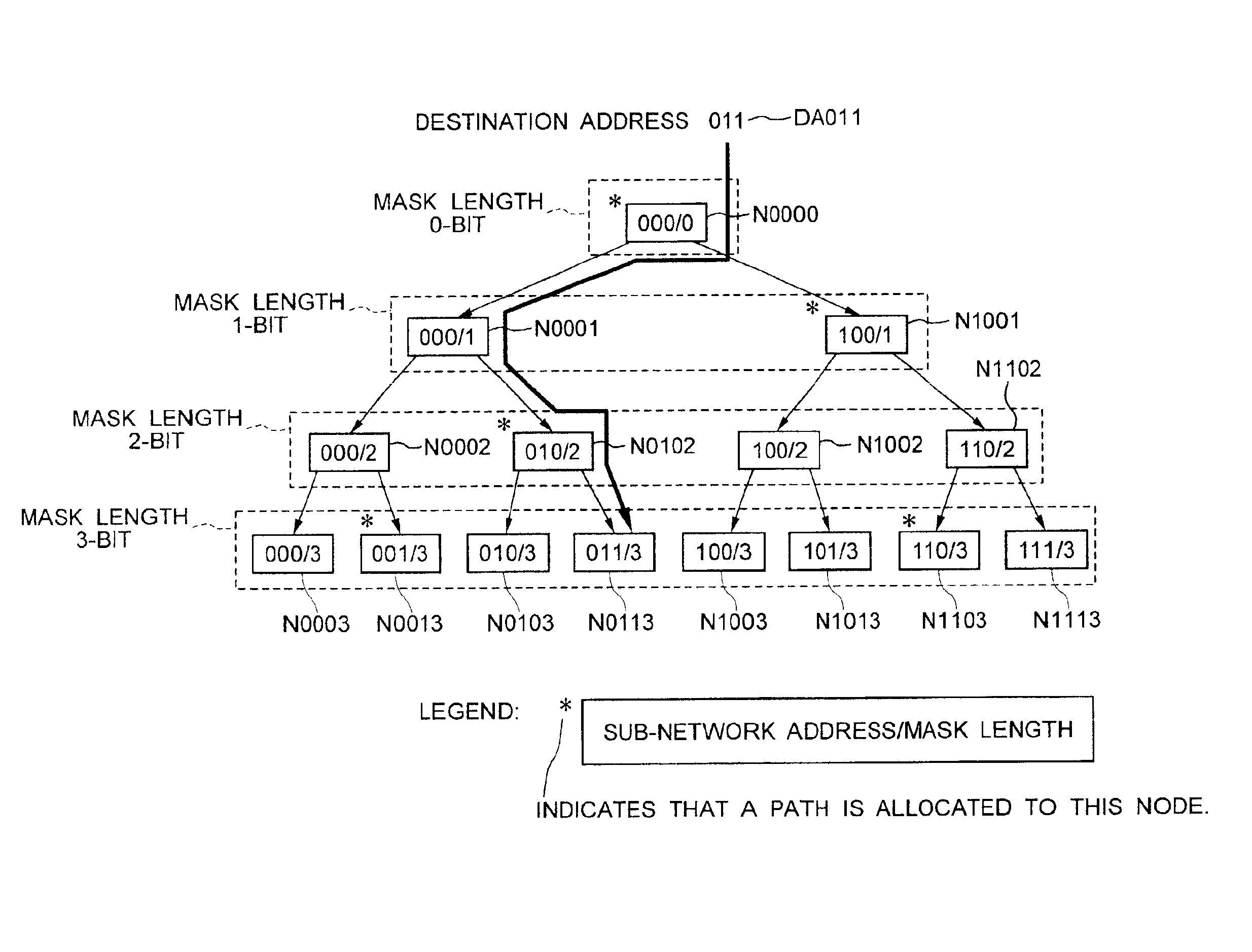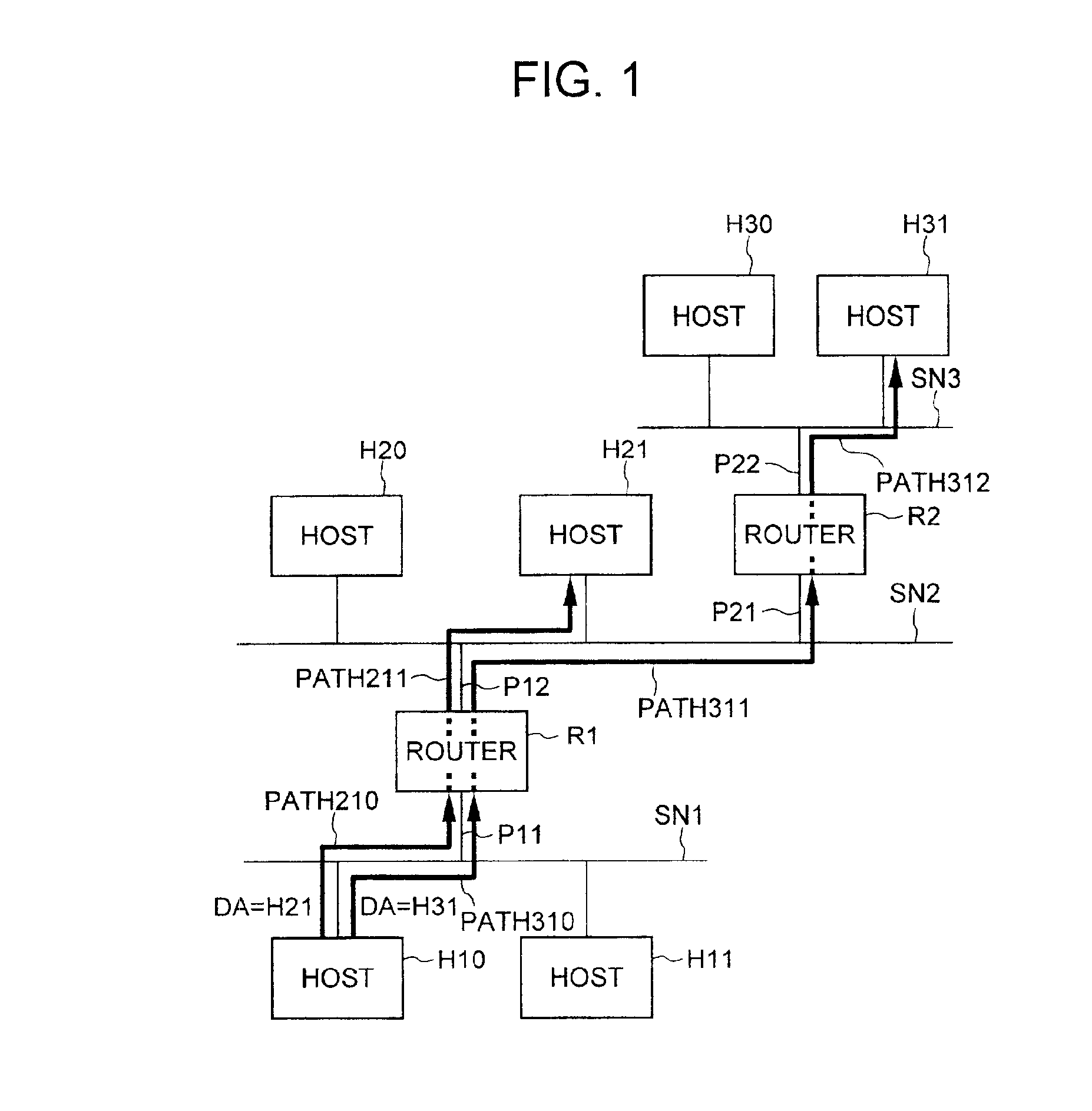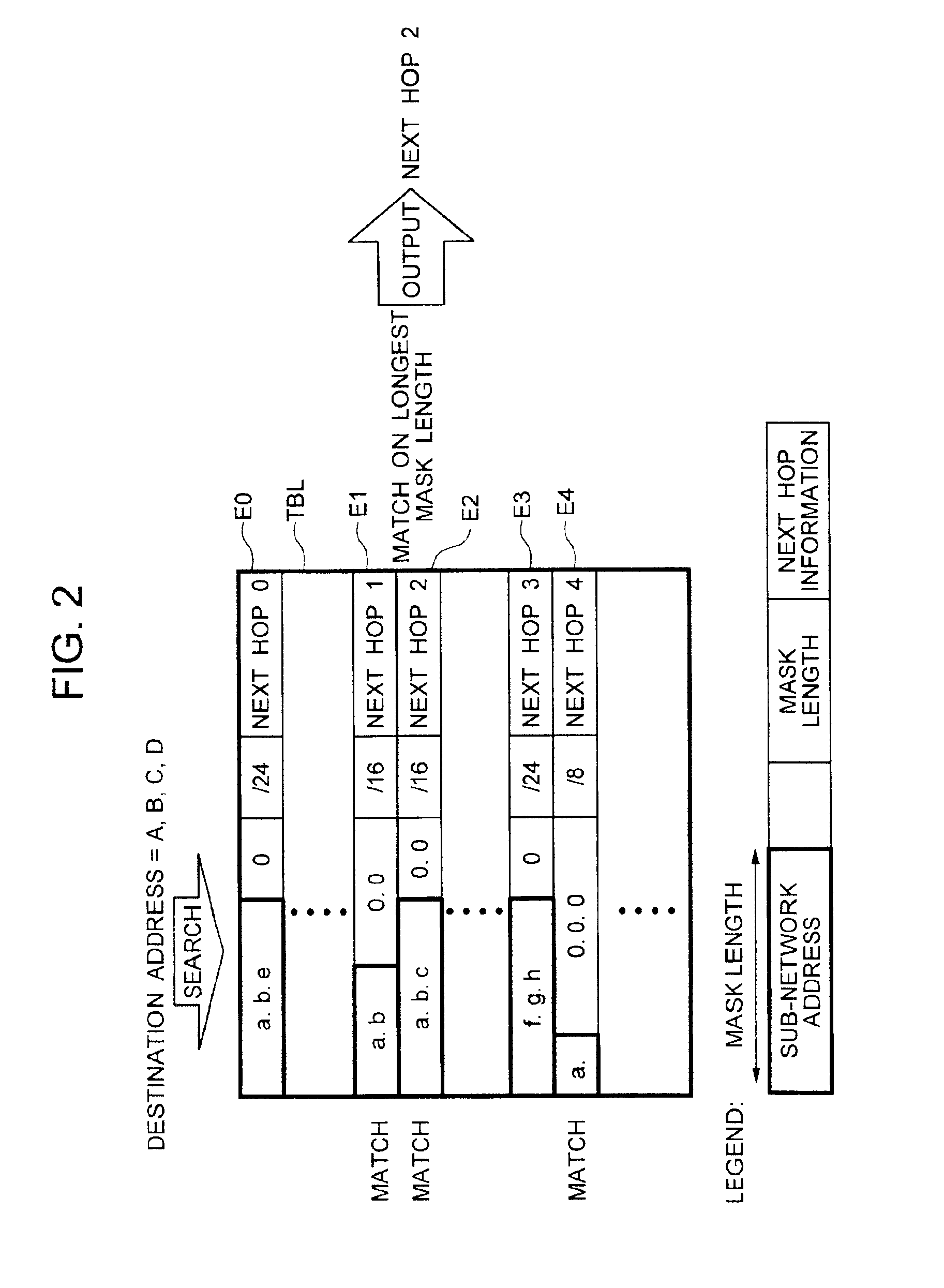Network repeater and network next transfer desitination searching method
a network repeater and search method technology, applied in the field of network forwarding devices, can solve problems such as long time, and achieve the effects of reducing the amount of memory for storing a data structure, preventing the increase of read time, and reducing the data read tim
- Summary
- Abstract
- Description
- Claims
- Application Information
AI Technical Summary
Benefits of technology
Problems solved by technology
Method used
Image
Examples
Embodiment Construction
To describe the present invention more in detail, the best mode for carrying out the present invention will be described with reference to the attached drawings.
First, the typical configuration of a router to which the present invention applies will be described with reference to FIG. 38. In FIG. 38, number 100 is a router, number 110 is a routing controller, number 120 is a router bus, number 130 is a network interface, number 140 is a port, and number 150 is a sub-network.
The network interface 130 receives a packet from a sub-network connected to the port 140 and sends the received packet to the routing controller 110 via the router bus 120. The routing controller 110, with a routing table in which routing information is stored, checks the destination of the received packet with the use of the routing information to determine the sub-network 150 to which the packet is to be forwarded, and sends the packet to the network interface 130 of the port 140 to which the sub-network 150 is...
PUM
 Login to View More
Login to View More Abstract
Description
Claims
Application Information
 Login to View More
Login to View More - R&D
- Intellectual Property
- Life Sciences
- Materials
- Tech Scout
- Unparalleled Data Quality
- Higher Quality Content
- 60% Fewer Hallucinations
Browse by: Latest US Patents, China's latest patents, Technical Efficacy Thesaurus, Application Domain, Technology Topic, Popular Technical Reports.
© 2025 PatSnap. All rights reserved.Legal|Privacy policy|Modern Slavery Act Transparency Statement|Sitemap|About US| Contact US: help@patsnap.com



